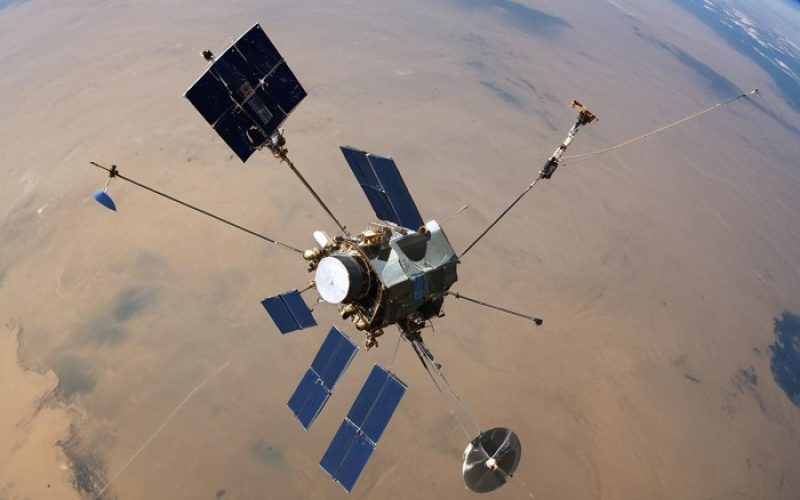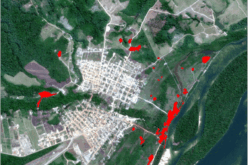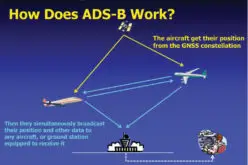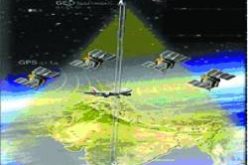The Global Navigation Satellite System (GNSS) has revolutionized the way we navigate and position ourselves in the world. With continuous advancements, one of the most significant developments in recent years is the introduction of the L5 frequency. This new frequency promises to enhance the precision and reliability of satellite navigation systems, making it a critical component for various high-stakes applications such as aviation, maritime, and even autonomous vehicles.
The L5 frequency was developed as part of the modernization efforts of the Global Positioning System (GPS) by the U.S. Department of Defense. Today, it is also supported by international GNSS systems such as Galileo in Europe, BeiDou in China, and IRNSS in India. These organizations have been working collaboratively to enhance the capabilities and accuracy of GNSS.
Aviation, maritime, and other industries such as surveying require high-precision navigation and are the primary beneficiaries of the L5 frequency. For instance, airlines rely on the L5 frequency for more accurate flight paths and landing approaches, while maritime vessels use it for safer and more reliable navigation.
What is the L5 frequency?
The L5 frequency, at 1176.45 MHz (wavelength 25.48 cm), is one of the three primary frequencies used by GNSS for signal transmission. It is designed to provide higher accuracy and better signal quality than the older L1 and L2 frequencies. The L5 signal includes advanced features such as a wider bandwidth and improved error correction.
The L5 frequency shared by IRNSS, GPS, Galileo, and QZSS is comparable to other L5/E5a signals for positioning and navigation.
What makes it different from other GNSS frequencies?
The L5 frequency operates at a higher power level and provides better resistance to interference and multipath effects, common issues in urban environments. Its wider bandwidth allows for more detailed information to be transmitted, resulting in higher precision in positioning.
Similar Read – Everything You Need To Know About GPS L1, L2, and L5 Frequencies
When was the L5 frequency introduced?
The development of the L5 frequency began in the early 2000s, with the first operational signals transmitted in 2010 by the GPS IIF satellites. Its introduction is part of a broader modernization initiative aimed at improving the accuracy and reliability of GPS technology.
Currently, the L5 frequency is available but not yet fully operational globally. Efforts are ongoing to ensure all GNSS systems support L5, with full operational capability expected within the next few years as more satellites and ground systems are upgraded.
Why L5 frequency in GNSS?
The introduction of the L5 frequency addresses the growing demand for higher precision and reliability in GNSS. Traditional frequencies like L1 and L2 face challenges with interference and multipath effects, especially in dense urban environments.
L5 operates in a frequency band reserved exclusively for aviation safety services, minimizing the risk of interference from other radio traffic, such as television broadcasts and ground-based navigation aids. This characteristic makes L5 particularly suitable for critical applications, including aviation and other safety-of-life transportation systems.
The third frequency, L5, enables triple-frequency combinations, improving PPP convergence time and precision of the estimated parameters by about 10% making it suitable for critical applications and increasing reliability and redundancy in precise point positioning.
L5/E5a/B2a signals from GPS, IRNSS, QZSS, Galileo, and Beidou-3 satellites provide higher positioning accuracies and better integer ambiguity resolution compared to L1/E1/B1 signals.

Feature of L5 frequency
- Strong Signal Transmission – Get faster location acquisition and better coverage in dense urban environments.
- Protected and Strong Resistance Band – Minimize jamming, and spoofing and improve multipath mitigation.
- Wide Bandwidth – Ensure outstanding accuracy and support for multipath mitigation
- Supported by Over 70 Satellites – Acquire dependable signal availability in the L5 band.
Similar Read – GNSS Systems in Precision Applications
Why is it important for modern navigation and positioning systems?
The L5 frequency enhances the accuracy and reliability of navigation systems, making it crucial for applications that require precise positioning. This includes not only aviation and maritime but also emerging technologies like autonomous vehicles, drones, and high-precision mapping.

How does the L5 frequency improve GNSS performance?
The L5 frequency’s higher power level and wider bandwidth reduce the impact of interference and signal reflection, resulting in more accurate positioning.
L5 helps solve ambiguity more quickly and eliminates effects of ionosphere and troposphere thus improving time-to-first-fix ambiguities and positioning accuracy when used instead of L1, especially when the baseline is not too long.
Since, L5/E5 signals are more precise and less prone to distortions from multipath reflections, improving positioning accuracy in urban environments.
The IRNSS L5-signal has comparable noise characteristics to other L5/E5a-signals, and L5/E5a-only processing improves ambiguity resolution performance for single-frequency carrier phase-based positioning and navigation.
Combining L5 signals from GPS/Galileo/QZSS/IRNSS significantly improves ambiguity success rates, and positioning performance under high elevation mask, reaching above 95%.
Combined IRNSS and QZSS L5 positioning provides mm-to-cm level precision for instantaneous ambiguity-fixed positioning with close to 100% ambiguity success rates.
Similar Read – Everything You Need To Know About GPS L1, L2, and L5 Frequencies
How is it implemented in current GNSS receivers?
Modern GNSS receivers are being designed to be compatible with the L5 frequency. Many new devices already support L5, and firmware updates are being released for existing equipment to ensure they can take advantage of the improved performance offered by L5 signals.”
Conclusion
In summary, the L5 represents a significant advancement in GNSS technology, offering higher precision, better reliability, and reduced interference. As it becomes more widely adopted, we can expect to see substantial improvements in various applications that depend on accurate positioning.











